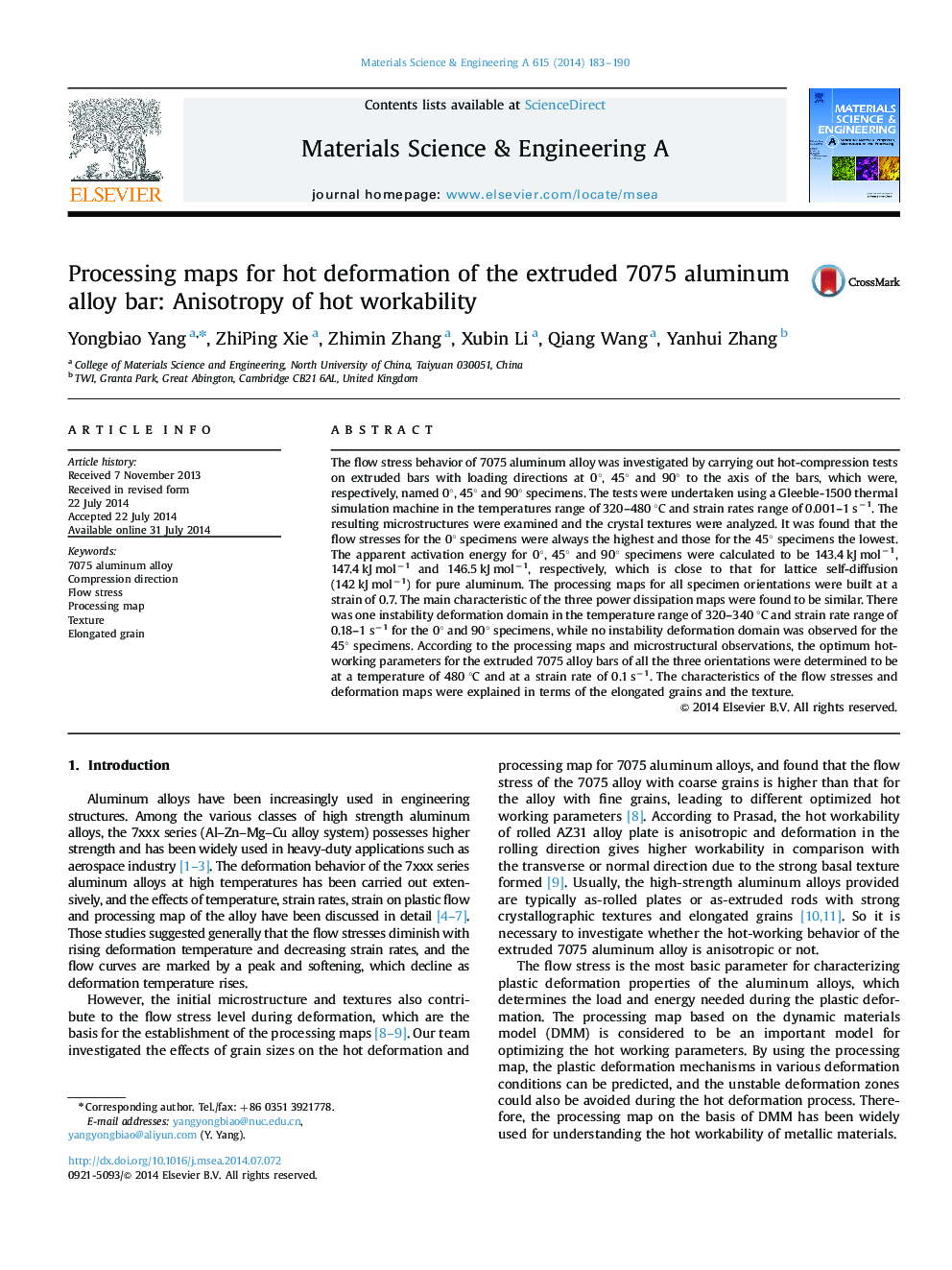| Article ID | Journal | Published Year | Pages | File Type |
|---|---|---|---|---|
| 7980026 | Materials Science and Engineering: A | 2014 | 8 Pages |
Abstract
The flow stress behavior of 7075 aluminum alloy was investigated by carrying out hot-compression tests on extruded bars with loading directions at 0°, 45° and 90° to the axis of the bars, which were, respectively, named 0°, 45° and 90° specimens. The tests were undertaken using a Gleeble-1500 thermal simulation machine in the temperatures range of 320-480 °C and strain rates range of 0.001-1 sâ1. The resulting microstructures were examined and the crystal textures were analyzed. It was found that the flow stresses for the 0° specimens were always the highest and those for the 45° specimens the lowest. The apparent activation energy for 0°, 45° and 90° specimens were calculated to be 143.4 kJ molâ1, 147.4 kJ molâ1 and 146.5 kJ molâ1, respectively, which is close to that for lattice self-diffusion (142 kJ molâ1) for pure aluminum. The processing maps for all specimen orientations were built at a strain of 0.7. The main characteristic of the three power dissipation maps were found to be similar. There was one instability deformation domain in the temperature range of 320-340 °C and strain rate range of 0.18-1 sâ1 for the 0° and 90° specimens, while no instability deformation domain was observed for the 45° specimens. According to the processing maps and microstructural observations, the optimum hot-working parameters for the extruded 7075 alloy bars of all the three orientations were determined to be at a temperature of 480 °C and at a strain rate of 0.1 sâ1. The characteristics of the flow stresses and deformation maps were explained in terms of the elongated grains and the texture.
Related Topics
Physical Sciences and Engineering
Materials Science
Materials Science (General)
Authors
Yongbiao Yang, ZhiPing Xie, Zhimin Zhang, Xubin Li, Qiang Wang, Yanhui Zhang,
